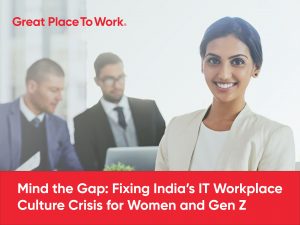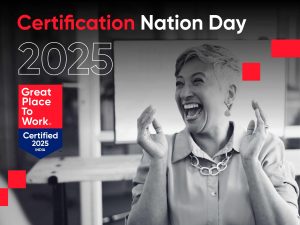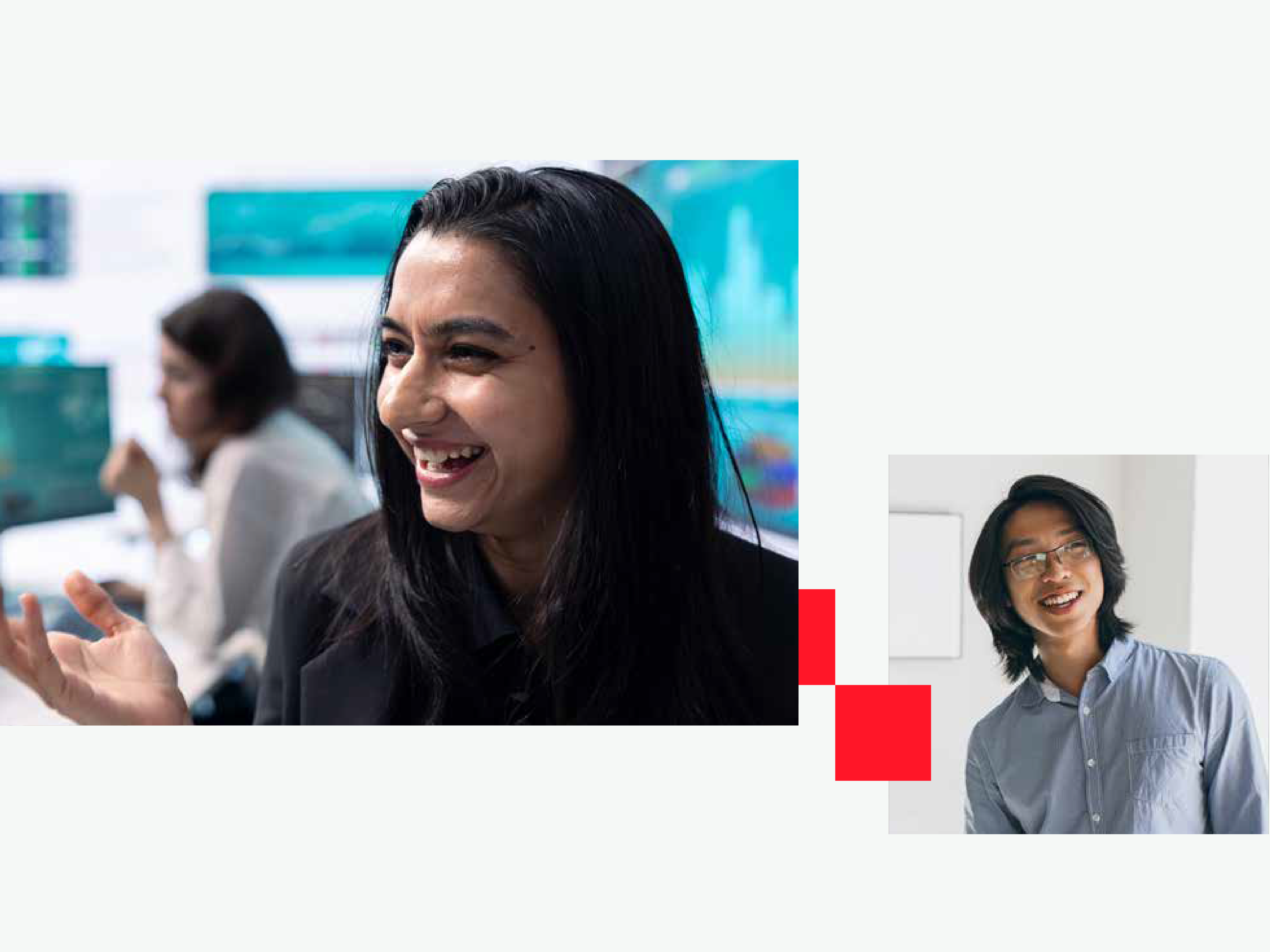Reading Time: 3 minutes
IT workplaces, which were once on an upward trajectory and enjoyed high levels of employee engagement, are now experiencing a decline over the last 2 years. The dip in employee engagement is even more acute for large IT companies in India (>1000 employees). While overall employee experience has dipped, we see that different cohorts in organizations have very unique employee experiences, based on their own expectations and life stage realities. So, what are the challenges that organizations should focus on so as to improve their workplace culture and ensure employee retention of different cohorts of employees?
Where are the gaps in Workplace Culture?
In large IT firms (1000+ employees), only 47% of women and 51% of Gen Z report positive workplace experiences. In contrast, Great IT workplaces (1,000+ employees) are almost doubling these scores with 84% of women and 78% of Gen Z thriving.
What’s driving this difference?
- Authenticity
- Inclusion
- Fair Pay
While over 75% of women, as well as Gen Z in Great workplaces feel management’s actions match their words, this is less than 40% in typical workplaces. The differences in experience are not small, they are huge; resulting in over 85% of women, as well as Gen Z, in great workplaces, look forward to coming to work, vs less than 40% in typical workplaces. Therefore, these are not just HR metrics, they are business imperatives.
What is the best way of creating a great workplace culture to address these differences in employee experience?
Leaders, it’s time to ask: Are we building workplaces where everyone can thrive? So, let’s move beyond productivity and start designing cultures of trust, equity, and belonging.
Now, the question is how do best workplaces create a culture which is authentic, inclusive and fair for all?
Some relevant practices from best workplaces help understand how to close some of the gaps.
At S&P Global, the Women’s Initiative for Networking and Success (WINS) connects women and allies across S&P Global to ensure gender diversity. It promote inclusivity, and advocate for an equitable world. WINS’ programming promotes personal and professional development. This also creates access to career mobility and leadership opportunities, and drives awareness of pertinent women’s issues. WINS also includes WiT (Women in Technology), an industry resource group within S&P Global, that amplifies WINS’ impact through a focus on technology and innovation.
At DHL Express, the focus for everyone, from the C-suite to frontline workers, is the customer. Therefore, very employee at DHL is considered a salesperson; they should understand the core business, the value.
It brings to customers, and how they, as an employee, contribute to it. This helps create a common sense of purpose, which is a key driver for Gen Z.
If you are a CXO, CHRO, or people leader in tech, then you should take a closer look at your workplace experience data. Create a plan on how to improve communication, connect and practice to build a great place to work.
The future of your talent strategy depends on it.
Frequently Asked Questions:
What is the overall difference between great workplaces and others in the IT industry?
Certified companies outperform typical workplaces by 19% on the Trust Index™ Pulse Score.
Is salary the main driver for these differences?
No, salary is not the main driver for employee engagement. 6 in 10 employees in IT are willing to accept a reduced salary in exchange for improved workplace culture and flexibility.
How does creating a great workplace culture help an organization attract the right talent?
Workplace culture is a key factor to evaluate a potential employer. Moreover, 93% of employees in the IT industry cite work culture as a crucial consideration when selecting a potential employer.
Does workplace culture help retain Gen Z talent?
8 in 10 Generation Z employees believe that knowing a workplace has been certified™ makes them more likely to want to work there.









